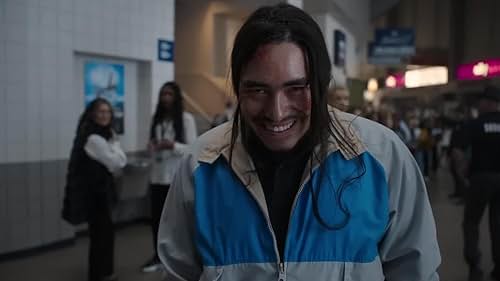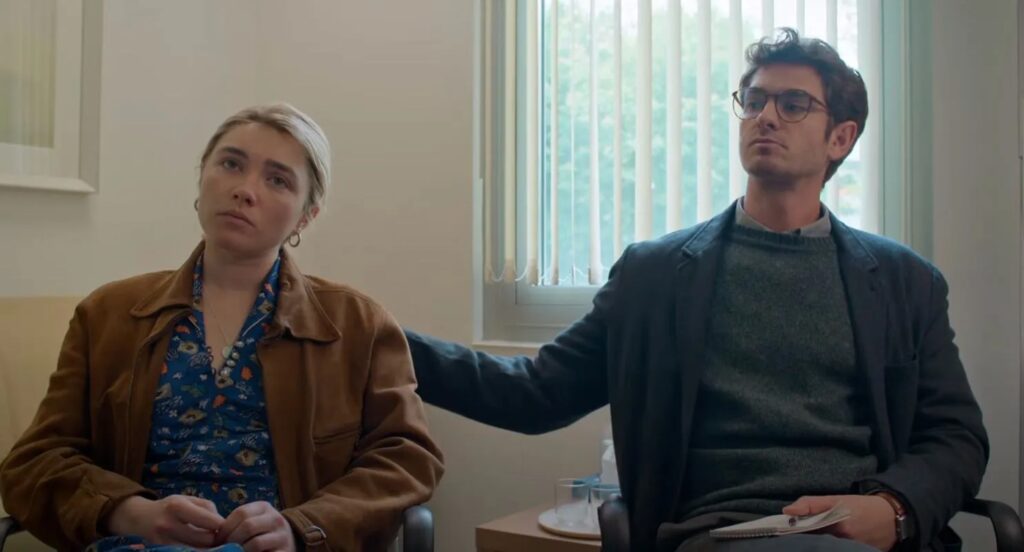
I love it when a movie like Smile, or one of its sequels, does well at the box office. In this case, Smile 2 took in 23 million dollars, which is 2 million more than the first film made.
Why do I like this? Because it’s something any aspiring writer on this site can achieve. I’m not saying it’s easy. But it IS achievable.
That’s because horror remains the NUMBER 1 avenue for an unknown writer to write a movie that not only gets sold, and not only gets made, but has the chance to become a hundreds of millions of dollars franchise. As Smile has already proven.
BUT.
You do need to understand how most horror projects get made in order to take advantage of this opportunity.
It’s tricky. So pay attention.
The majority of brand new horror films you see are created by writer-directors. From Lights Out to Get Out to It Follows to Smile. Usually, a short is created to show proof of concept or a new writer-director is in a position to make his first feature and goes with horror.
And you’ll notice a common thread with all these movies. They’re incredibly simple. Not just sort of simple. But INCREDIBLY simple. Lights Out is about a light switch. Get Out is a dude meeting his girlfriend’s parents. It Follows = a person follows you. Smile? Smile is a freaking smile! That’s it! The entire franchise is built on a single image.
So here’s the thing. I don’t think any of these movies would’ve worked as spec scripts. They’re too simplistic. And the key images (like an evil smile) wouldn’t shine bright enough on the page that someone would say, “I have to buy this.”

If you’re going to sell a horror spec, your concept and execution have to be a little more clever than the average screenplay. A Quiet Place is a good example. A world where you can’t make a sound or monsters kill you *is* still a simple premise. But note what the writers did with that. They created a nine months pregnant character who had no choice but to have a baby completely silently. That’s clever. And that’s why the script DID, unlike these other horror movies, sell as a spec.
So what do we call this practice then?
I think I’d like to call it SIMPLE + 1. Horror works great with a simple premise. That’s been proven over and over again. But “simple” means you have to direct it yourself. If you want to sell your horror script, you need that “+1” element. And, to me, the best +1 element is something more clever than the average bear. Either with the premise or the execution or both.
Sure, they’re older movies but I know for a fact The Sixth Sense would’ve sold today. As would The Others. As would Scream. Because they have that +1 element. The Sixth Sense has a prime hook: “I see dead people.” Not only that but an execution so great, it probably throws a +2 or a +3 into the mix. The Others was one of the better horror mysteries ever written (and also had a great final twist). And Scream was one of the best horror films ever at subverting the genre.
More recently on the spec side of things, you have horror films like 10 Cloverfield Lane, The Purge, Happy Death Day, The Menu, and, to a certain extent, Malignant (although I know there are extenuating circumstances with that spec sale). But I still think Malignant would’ve sold without the writer being in a relationship with James Wan.
So, if you want to sell sell sell a horror screenplay, make sure you are bringing a +1 element to the table. Otherwise, you could write the next “Smile” (“Sneeze” maybe?) and no one would take a chance on it.
As for the rest of the box office, I’m loving this little engine that could movie, The Wild Robot, crossing 100 million. It’s a bittersweet victory because I felt this movie had the best trailer of the year and since all animated movies make a billion dollars, it would as well. But then I learned this was a much smaller movie with smaller goals. Regardless, it’s got killer critic and audience scores, so much so that I almost bought it for 25 bucks on streaming the other day. Then I realized I’m not a crazy person. I could wait.
I’m still trying to work out We Live In Time’s path to production. Cancer films are about as fun to watch as cancer itself. But the truth is, actors do like these roles. And ever since Love Story’s surprise success in 1970, studios every once in a while take a gamble on one of these scripts, hoping they strike gold. I guess what I’m saying is, if you’re a writer who likes writing really depressing movies, there IS a path to success with cancer scripts. Actors will play these roles and studios will release these films. But come on. Which of these two movies would you rather see? This one?

Or this one…?

Saturday Night’s quick demise at the box office was as expected as leaves falling from trees in October. Jason Reitman continues to be one of the most toothless directors in the business. His films are so light and inoffensive, they might as well be a helium balloon at a 10 year old’s birthday party.
It’s not that I’m against feel-good movies. Give me a Wonka screening any day of the week. But even his feel-good movies are devoid of any effective drama or conflict. There are no teeth in a Reitman movie. Now, that being said, I do like the spec-y way he approached this movie, setting it in real-time on the first night of Saturday Night Live. But someone’s got to help Reitman read the room. He’s worse at picking concepts than Trajent Future.

Finally, props go out to Anora, the Sean Baker film that is so indie, it will stop collecting money as soon as it reaches 5 million at the box office. The film made 90 thousand bucks per theater this weekend. I like Sean Baker’s films because they live by the Scriptshadow creed of: KEEP IT SIMPLE. But also because he creates an energy in front of the camera that’s legitimately special. I planned to see this this weekend but a last minute schedule change prevented me from doing so. But I’ll watch it soon and review it! I expect it to be excellent and a major Oscar contender.
What’d you see this weekend? What’s your review?

